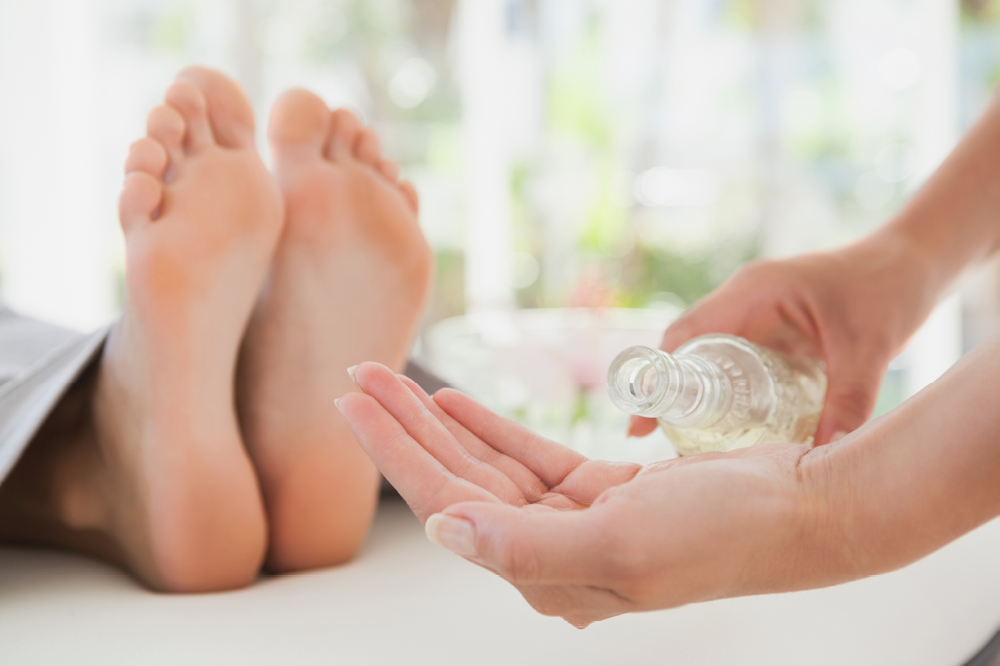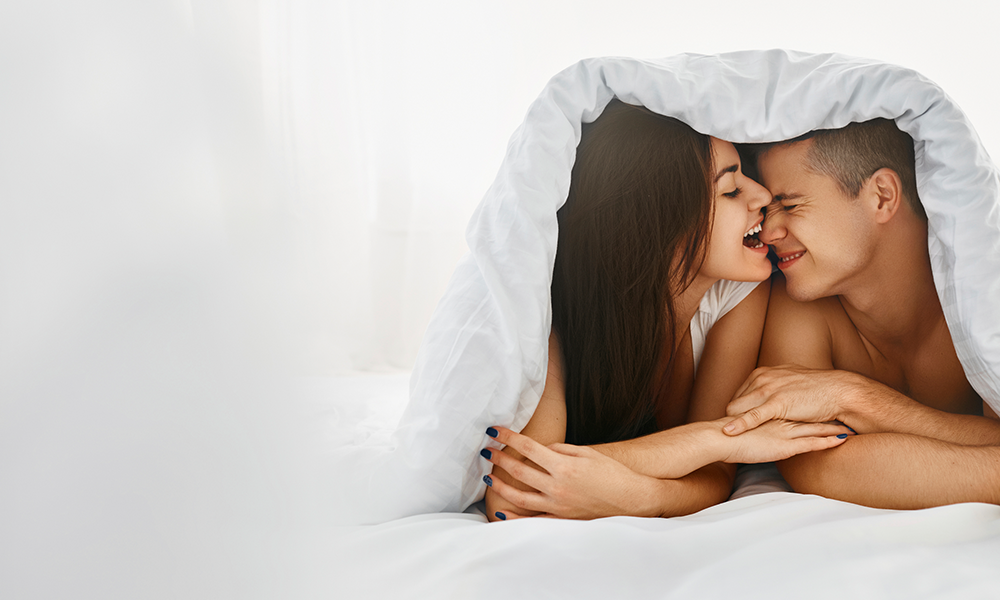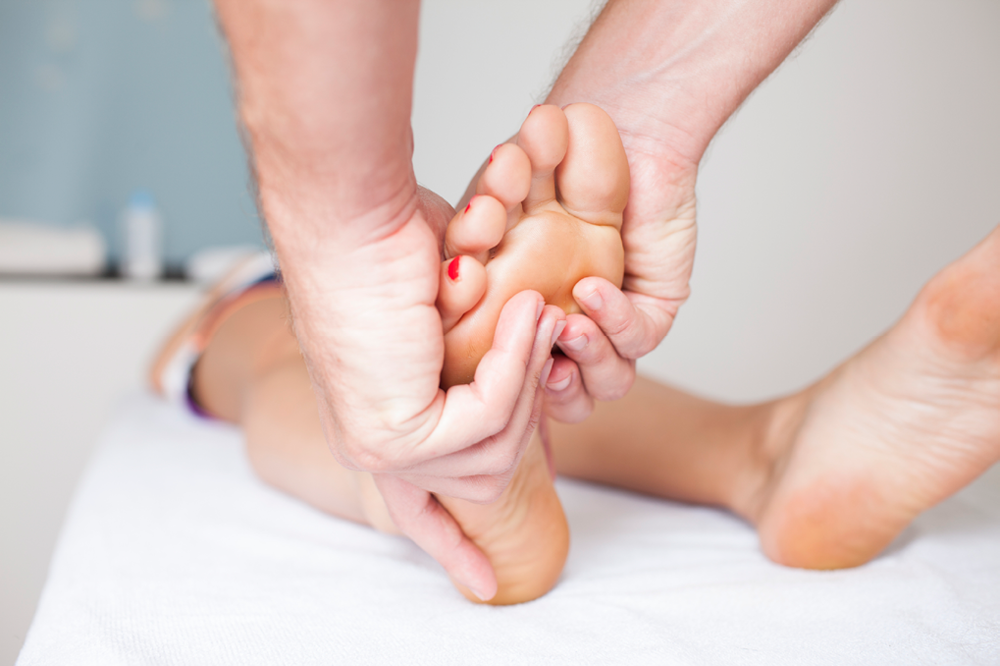A soothing foot massage is one of the most indulgent and relaxing body treatments out there, but did you know that you may be able to boost a foot rub’s healing power and feel-good factor simply by switching to different foot massage techniques? Most people don’t consider the health benefits of different foot massage types, but switching up the technique can lead to ultra relaxation — and some types of massage therapy even have the potential to heal different diseases and illnesses.
Some of the different foot massage techniques include deep tissue massage, Swedish massage, shiatsu massage, Thai massage, hot stone massage, sports massage, aromatherapy massage, Chinese massage, pre-natal massage, ayurveda massage, trigger point therapy, acupressure and reflexology. (The last two aren’t technically considered massages but do involve pressing on specific points in the feet to relieve tension in the body). Here are each of the foot massage therapy types explained in a bit more detail.
Swedish Foot Massage

This is the most common type of massage therapy offered in the Unites States and involves long, smooth strokes along the foot as well as kneading and circular motions along the soles, toes and heels. Swedish massage is usually very gentle and relaxing, which makes it a recommended choice for people going for their first massage.
Deep Tissue Foot Massage
Deep tissue massage is a very intense therapy that targets the deeper layers of muscles in the feet. The massage therapist usually uses very slow, firm strokes that may initially cause pain but eventually lead to tension relief and healing effects in the sub-layer muscles and fascia. Deep tissue massage is normally reserved for injury recovery, chronic muscle soreness and other health issues.
Aromatherapy Foot Massage
Aromatherapy massage isn’t necessarily a massage technique, but more of a massage experience. It involves the use of aromatic essential oils that vary depending on a customer’s specific needs. Different aromatherapy oils have different effects, including the ability to increase energy, reduce stress, induce relaxation and/or cause drowsiness. A masseuse can use any massage technique and add essential oils, which is why it’s not always considered a specific massage technique.
READ MORE: The Best Essential Oils To Use On Your Feet
Hot Stone Foot Massage
This type of massage therapy involves placing smooth, heated stones on the feet to warm and relax the muscles. Sometimes the masseuse presses the stones into the feet to create a warming pressure that further helps relieve deep muscle tension.
Shiatsu Foot Massage
Shiatsu massage stems from Japan and involves targeted, rhythmic finger pressure along acupuncture meridians (said to be where the body’s energy flows). Each point is generally pressed for about five seconds, with the end result believed to be a better balance of body energy as well as ultimate relaxation.
Thai Foot Massage
This type of massage therapy is also believed to balance the body’s energy by applying firm but gentle pressure on specific points of the foot. Thai massage also involves stretches and body contortion, but these are generally avoided when the massage is target specifically toward the feet. However, you may want to prepare for the massage therapist to move and stretch your feet in ways you might not be familiar with. Thai massage is especially helpful for those who wish to increase energy as well as improve flexibility, range of motion and strength in their feet.

Reflexology Foot Massage
As we previously mentioned, reflexology isn’t technically considered a massage. However, it is similar to a massage in that it involves targeted pressure to specific points on the body to relieve tension, rebalance energy and induce relaxation. Foot reflexology points are believed to be connected to various organs throughout the body and therefore said to be able to help heal diseases and conditions like arthritis, neuropathy, cancer, headaches, digestive issues, PMS, pain and more.
Chinese Foot Massage
There are several types of Chinese massage, each touting its own health benefits. All revolve around the same meridian points used in acupuncture. An Mo involves pressing and rubbing; Tui Na An Mo involves pushing, grasping and kneading; Qu An Mo is aimed specifically at increasing energy; and Zhi Ya involves pinching and pressing acupressure points.
More about Traditional Chinese Medicine
Sports Foot Massage
As the name suggests, sports foot massage is aimed toward athletes and gym enthusiasts. However, you don’t have to be a professional athlete to receive a sports massage. People who regularly jog or work out often should also consider sports massage, as the technique is used to help improve athletic performance as well as prevent and treat training injuries. Sports massage usually involves a lot of stretching and flexing as well as quick, firm strokes.
READ MORE: Should You Get A Sports Massage?
Acupressure Foot Massage
While not considered a type of massage per se, acupressure involves applying targeted pressure to specific points on the body called meridians or acupoints. The technique is similar to acupuncture, which involves inserting thin needles into the same meridians to achieve relaxation, healing, energy balancing and therapeutic benefits. Acupressure enthusiasts often turn to the therapy to help heal common conditions like allergies, headaches, lower back pain, nausea, stomachaches, and muscular aches and pains.
READ MORE: Focus On These Acupressure Points To Achieve Optimal Health
Trigger Point Therapy
Myofascial trigger point therapy is a serious type of massage that aims to relieve trigger points, which are tight, painful muscle knots that form due to stress or injuries. It’s rare to receive trigger point therapy massage on the feet, but it can be a form of relief in certain cases such as to help heal plantar fasciitis. Other types of foot pain, especially heel pain, are soothed via applying pressure to the calf during trigger point therapy. It might sound counterintuitive to apply pressure to the legs to relieve foot pain, but many trigger point experts believe some types of foot pain actually originate in the legs.
READ MORE: How Myofascial Trigger Point Therapy Can Treat And Prevent Pain And Injuries
Ayurveda Foot Massage
Ayurveda foot massage (also called Padabhyanga) is a massage therapy technique that hails from India. The practice suggests that there are three elemental substances in the body (doshas called Vata, Pitta and Kapha) that need to remain in balance in order for a person to remain healthy. Ayurveda foot massages use aromatic oils and Swedana (fomentation) to rebalance these doshas, clear energy channels called srotas and restore the transport of blocked bodily fluids — the combination of which is believed to relax the body, increase circulation, reduce stress and offer healing benefits for illnesses.
READ MORE: The Miraculous Healing Powers of Ayurveda Foot Massage

Prenatal Massage
Also called pregnancy massage, this massage technique is aimed specifically toward expectant women. For safety reasons, prenatal massage can only be applied by those certified to practice pregnancy massage. The technique varies with each mom, but most prenatal massages use gentle strokes and pressure to help relieve uncomfortable symptoms of pregnancy including swollen feet, aches and pains, anxiety, depression and stress.
Infant Foot Massage
Just as with adults, infants can also benefit from foot massage. Research suggests that rubbing your baby's feet can help relieve common infant discomforts like tummy troubles, fussiness, colic, teething pains and sickness. Most infant foot massage techniques revolve around the principles of reflexology, which says bodily organs are connected to specific points on the feet. For instance, massaging your baby’s toes may be able to ease his or her teething pains, massaging the sole of the foot may help soothe an infant’s abdominal area, and massaging the heel may help relieve pelvic discomfort.
READ MORE: The Soothing Benefits Of Infant Foot Massage


